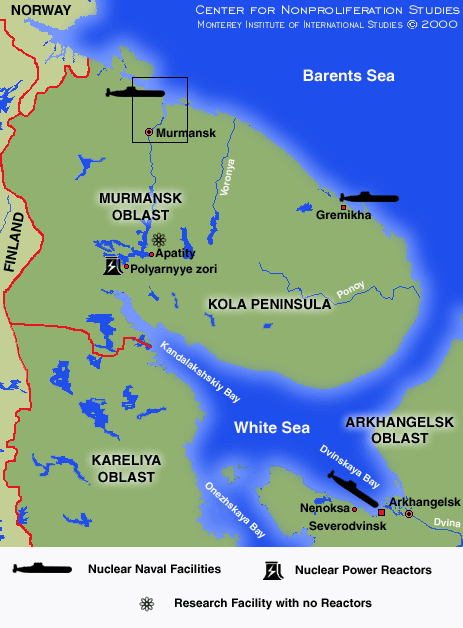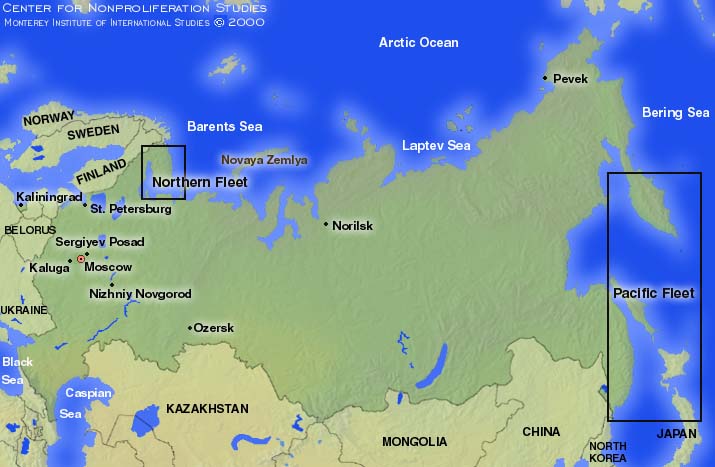World’s First Floating Nuclear Power Station
fabiano
발전소
0
1271
2007.04.19 22:33
바다를 떠다니는 핵발전소, 러시아 ‘핵발전 선박’ 건조 
바다 위를 떠다니며 전력을 생산할 수 있는 ‘핵발전소 선박’의 건조가 시작되었다고 16일 러시아 모스 뉴스가 보도했다.
러시아 원자력청에 의해 진행중인 ‘핵발전소 선박’은 환경 단체들의 큰 반발을 불러 모으고 있는데, 선박형 핵발전소가 대재앙을 가져올 수 있다는 것이 러시아와 인접한 노르웨이 환경 단체 측의 경고. 핵발전소 선박이 ‘바다의 체르노빌’이 될 가능성이 있다는 것.
하지만 선박 건조 사업을 시작한 러시아 원자력청 관계자는 환경 단체들의 주장을 일축했는데, 안전에 아무런 문제가 없다는 것이 원자력청 청장인 세르게이 키리옌코의 설명. “지상의 핵발전소보다도 뛰어난 안전성을 자랑하는 것은 물론 핵잠수함이 수도 없이 많지만 별다른 사고가 없었다”는 것이 그의 주장.
러시아 측은 최소 6척의 핵발전 선박을 건조, 북극 지역 등 전력 공급이 어려운 곳에 배치할 계획인데, 다른 국가에 판매할 계획도 가지고 있다고 언론은 덧붙였다.
(사진: 바다 위를 떠다니는 ‘핵발전소 선박’의 모습 / 러시아 모스 뉴스 보도 화면)
김화영 기자 (저작권자 팝뉴스)
Russia to Build World’s First Floating Nuclear Power Station for $200,000
Russia’s Federal Nuclear Energy Agency has made a decision to build a low capacity floating nuclear power plant (FNPP), the first project of its kind in the world. The plant will be small and will produce roughly 1/150th of the power produced by a standard Russian nuclear power plant. Construction could begin in 2006 if the project finds financing.
The mini-station will be located in the White Sea, off the coast of the town of Severodvinsk (in the Arkhangelsk region in northern Russia). It will be moored near the Sevmash plant, which is the main facility of the State Nuclear Shipbuilding Center. The FNPP will be equipped with two power units using KLT-40S reactors. The plant will meet all of Sevmash’s energy requirements for just 5 or 6 cents per kilowatt. If necessary, the plant will also be able to supply heat and desalinate seawater.
“If conditions are favorable, the floating plant could be operational in four to five years’ time,” said Yevgeny Kuzin, general director of the joint-stock company Malaya Energetika. By “conditions” Kuzin, who is the project leader, means funding. The small nuclear power station will cost about $200,000. Kuzin says that it will be hard to secure the necessary money. Russian businessmen have become used to making quick returns on their investments, and few are prepared to wait for long-term returns. Yet there are still some businessmen who break the mold and are aware of the benefits of taking a longer-term perspective.
And the concept of the FNPP is very promising. Small FNPPs would be a blessing for the Russian regions adjoining the Arctic Ocean. These areas lack centralized energy supplies, and an FNPP would be an independent source of energy. It is specifically this feature of the Russian technological innovation that is attracting attention abroad: Indonesia, Malaysia, and China have all shown interest in the project. The plant off the coast of Severodvinsk will therefore also act as a prototype that can be seen by potential foreign customers.
The steps for implementing FNPP project are as follows. A site for the floating power unit has to be selected in coastal waters, not far from the recipient of the power supply (be it a town, village or enterprise). The unit, which is powered by two reactors and accommodates engineering and amenity services, is then towed out to this site by a tug. The unit should be supported by compact onshore infrastructure ? transformers, pumps, heat supply units, etc. Then the plant is commissioned. It will have the capacity to supply energy to a town with a population of 200,000. If the entire capacity of the plant is switched over to desalinization of sea water, it will be able to produce 240,000 cubic meters of fresh water a day. “When the plant is decommissioned and pulled out, it leaves absolutely no pollution,” Kuzin said, quoted by RIA Novosti.
Potential terrorist threats were also taken into account when designing the plant’s security system. The latest scientific and technological advances in this field have been incorporated to prevent unauthorized access to fissile materials aboard the plant. Among other things, fingerprint and iris identification technologies will be used. The plant will also be protected against possible subversive attempts by terrorist divers. Much thought has been given to protecting the plant from external factors. For example, if an airliner, even one as big as a Boeing, were to fall on the plant, there is no way it would destroy the reactor.
The project head also maintained that Russia would not sell the floating nuclear plants to other countries, should a number of them be made in the future. “Russia will only sell its products ? electric power, heat and fresh water. This means that there is no cause for concern with respect to the proliferation of nuclear technologies. A floating plant under the Russian flag would be taken up to the coasts of states that had signed the necessary agreements. It would drop anchor in a convenient place that was protected from potential natural disasters and contact local engineering services on the shore. Then it would start up its reactors and ? let there be light!” he said.
The plant will save up to 200,000 metric tons of coal and 100,000 tons of fuel oil a year. It will be fully supported by the infrastructure of the Russian nuclear industry, and will be serviced by rotating teams. The reactors will be loaded with nuclear fuel once every three years and will have a lifespan of 40 years. Every 12 years the plant will be sent home and overhauled.
Russia: Map of Murmansk Oblast

Russian Naval Facilities

[팝뉴스 2007-04-19 13:27:34]

바다 위를 떠다니며 전력을 생산할 수 있는 ‘핵발전소 선박’의 건조가 시작되었다고 16일 러시아 모스 뉴스가 보도했다.
러시아 원자력청에 의해 진행중인 ‘핵발전소 선박’은 환경 단체들의 큰 반발을 불러 모으고 있는데, 선박형 핵발전소가 대재앙을 가져올 수 있다는 것이 러시아와 인접한 노르웨이 환경 단체 측의 경고. 핵발전소 선박이 ‘바다의 체르노빌’이 될 가능성이 있다는 것.
하지만 선박 건조 사업을 시작한 러시아 원자력청 관계자는 환경 단체들의 주장을 일축했는데, 안전에 아무런 문제가 없다는 것이 원자력청 청장인 세르게이 키리옌코의 설명. “지상의 핵발전소보다도 뛰어난 안전성을 자랑하는 것은 물론 핵잠수함이 수도 없이 많지만 별다른 사고가 없었다”는 것이 그의 주장.
러시아 측은 최소 6척의 핵발전 선박을 건조, 북극 지역 등 전력 공급이 어려운 곳에 배치할 계획인데, 다른 국가에 판매할 계획도 가지고 있다고 언론은 덧붙였다.
(사진: 바다 위를 떠다니는 ‘핵발전소 선박’의 모습 / 러시아 모스 뉴스 보도 화면)
김화영 기자 (저작권자 팝뉴스)
Russia to Build World’s First Floating Nuclear Power Station for $200,000
Russia’s Federal Nuclear Energy Agency has made a decision to build a low capacity floating nuclear power plant (FNPP), the first project of its kind in the world. The plant will be small and will produce roughly 1/150th of the power produced by a standard Russian nuclear power plant. Construction could begin in 2006 if the project finds financing.
The mini-station will be located in the White Sea, off the coast of the town of Severodvinsk (in the Arkhangelsk region in northern Russia). It will be moored near the Sevmash plant, which is the main facility of the State Nuclear Shipbuilding Center. The FNPP will be equipped with two power units using KLT-40S reactors. The plant will meet all of Sevmash’s energy requirements for just 5 or 6 cents per kilowatt. If necessary, the plant will also be able to supply heat and desalinate seawater.
“If conditions are favorable, the floating plant could be operational in four to five years’ time,” said Yevgeny Kuzin, general director of the joint-stock company Malaya Energetika. By “conditions” Kuzin, who is the project leader, means funding. The small nuclear power station will cost about $200,000. Kuzin says that it will be hard to secure the necessary money. Russian businessmen have become used to making quick returns on their investments, and few are prepared to wait for long-term returns. Yet there are still some businessmen who break the mold and are aware of the benefits of taking a longer-term perspective.
And the concept of the FNPP is very promising. Small FNPPs would be a blessing for the Russian regions adjoining the Arctic Ocean. These areas lack centralized energy supplies, and an FNPP would be an independent source of energy. It is specifically this feature of the Russian technological innovation that is attracting attention abroad: Indonesia, Malaysia, and China have all shown interest in the project. The plant off the coast of Severodvinsk will therefore also act as a prototype that can be seen by potential foreign customers.
The steps for implementing FNPP project are as follows. A site for the floating power unit has to be selected in coastal waters, not far from the recipient of the power supply (be it a town, village or enterprise). The unit, which is powered by two reactors and accommodates engineering and amenity services, is then towed out to this site by a tug. The unit should be supported by compact onshore infrastructure ? transformers, pumps, heat supply units, etc. Then the plant is commissioned. It will have the capacity to supply energy to a town with a population of 200,000. If the entire capacity of the plant is switched over to desalinization of sea water, it will be able to produce 240,000 cubic meters of fresh water a day. “When the plant is decommissioned and pulled out, it leaves absolutely no pollution,” Kuzin said, quoted by RIA Novosti.
Potential terrorist threats were also taken into account when designing the plant’s security system. The latest scientific and technological advances in this field have been incorporated to prevent unauthorized access to fissile materials aboard the plant. Among other things, fingerprint and iris identification technologies will be used. The plant will also be protected against possible subversive attempts by terrorist divers. Much thought has been given to protecting the plant from external factors. For example, if an airliner, even one as big as a Boeing, were to fall on the plant, there is no way it would destroy the reactor.
The project head also maintained that Russia would not sell the floating nuclear plants to other countries, should a number of them be made in the future. “Russia will only sell its products ? electric power, heat and fresh water. This means that there is no cause for concern with respect to the proliferation of nuclear technologies. A floating plant under the Russian flag would be taken up to the coasts of states that had signed the necessary agreements. It would drop anchor in a convenient place that was protected from potential natural disasters and contact local engineering services on the shore. Then it would start up its reactors and ? let there be light!” he said.
The plant will save up to 200,000 metric tons of coal and 100,000 tons of fuel oil a year. It will be fully supported by the infrastructure of the Russian nuclear industry, and will be serviced by rotating teams. The reactors will be loaded with nuclear fuel once every three years and will have a lifespan of 40 years. Every 12 years the plant will be sent home and overhauled.
Russia: Map of Murmansk Oblast

Russian Naval Facilities






